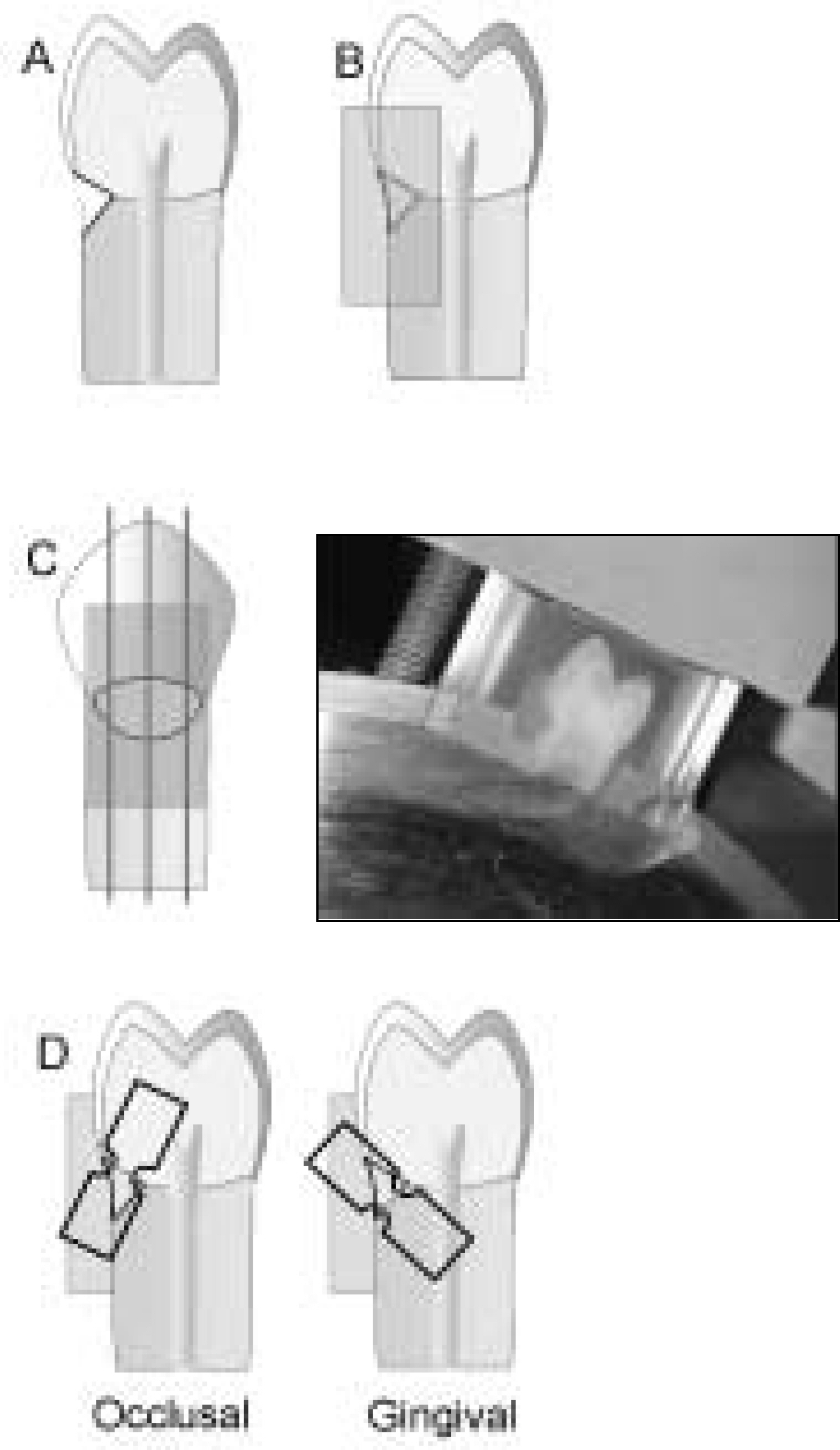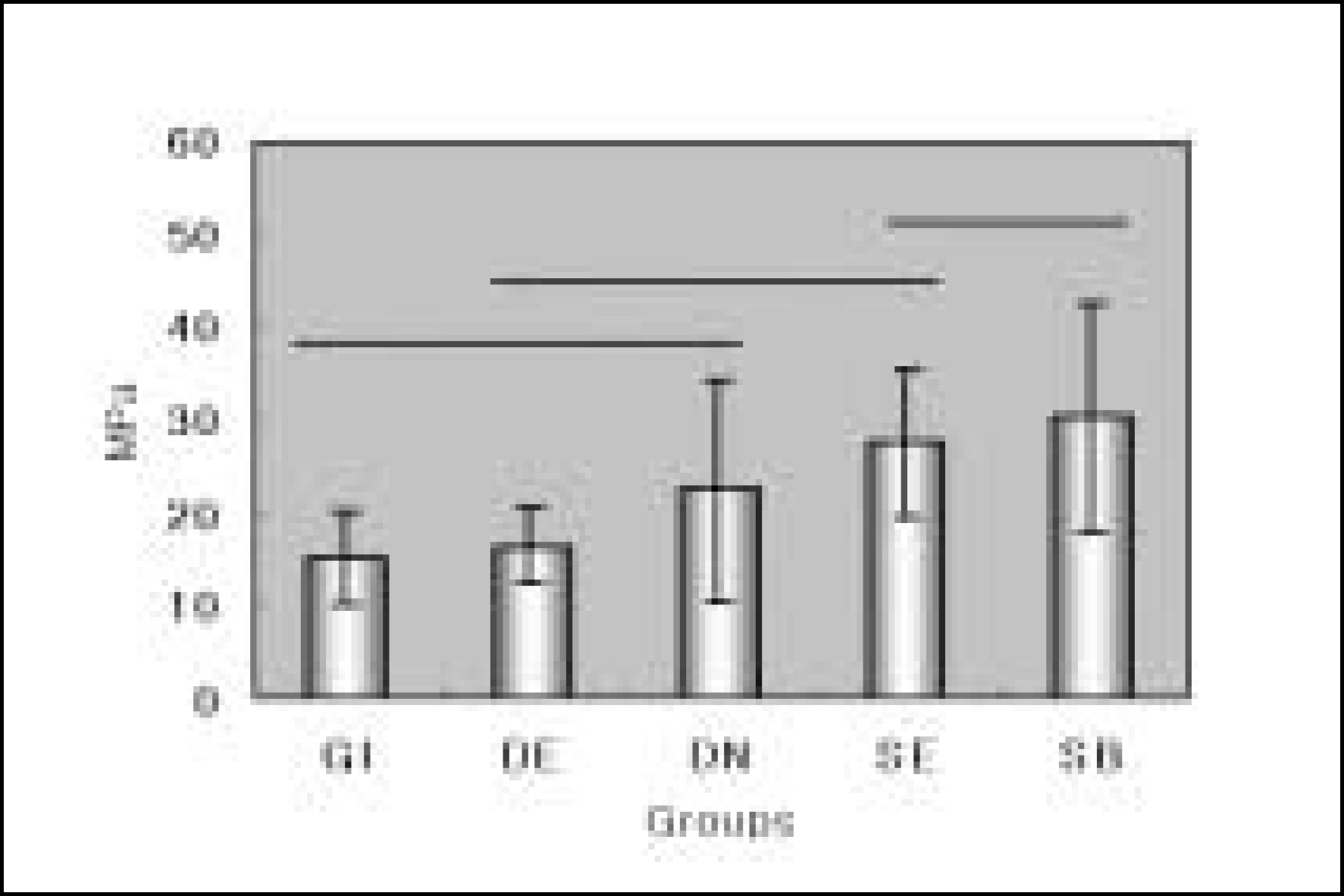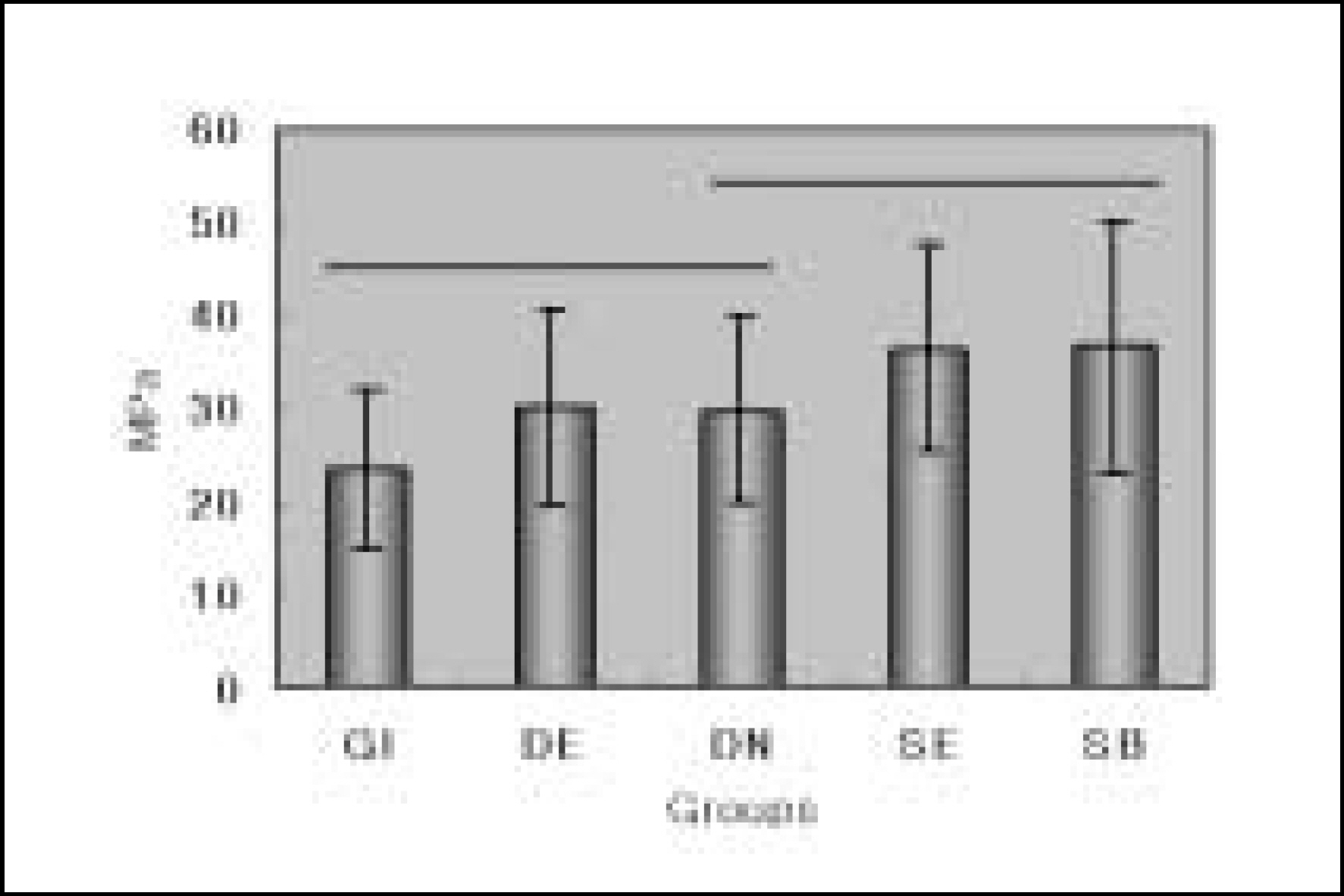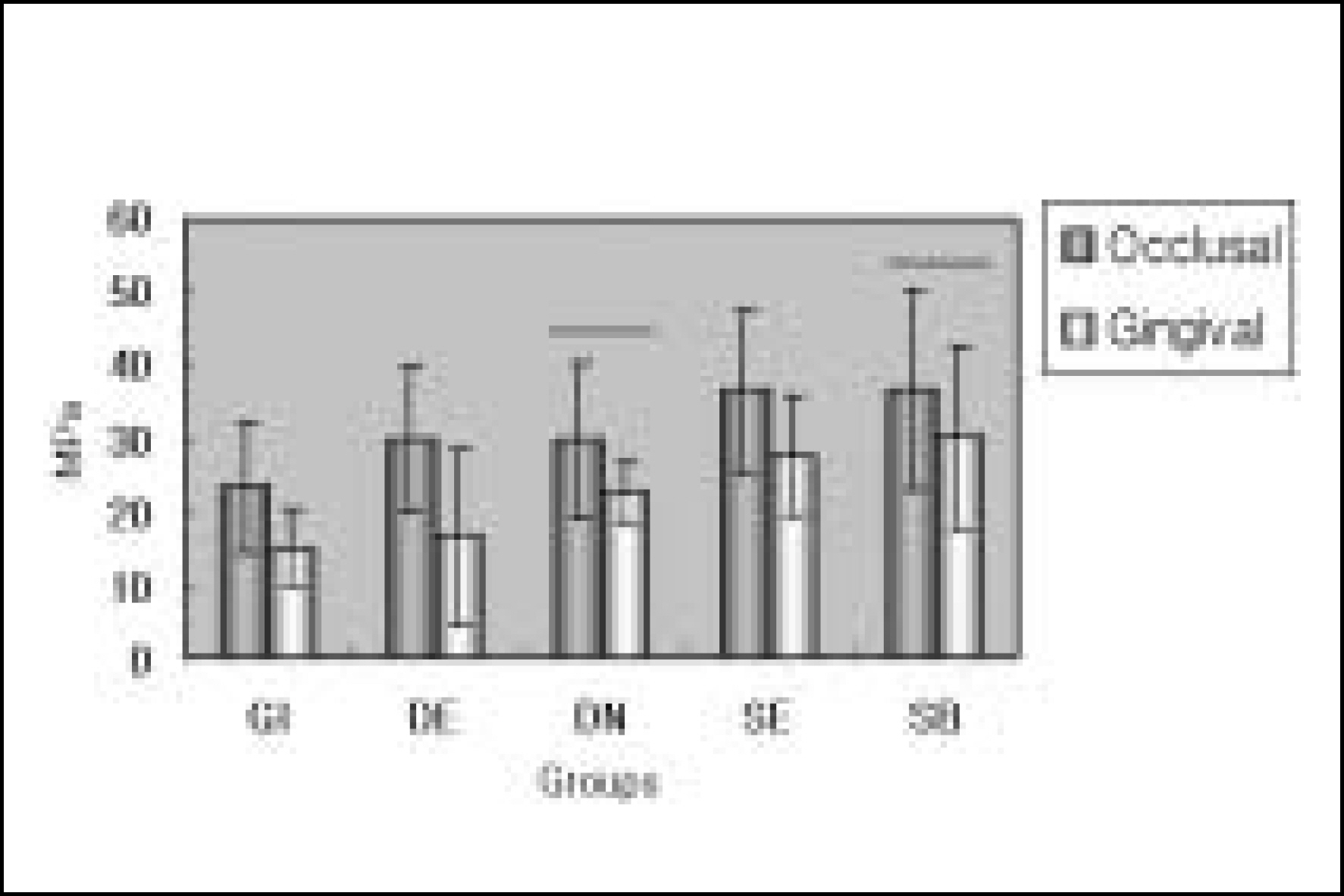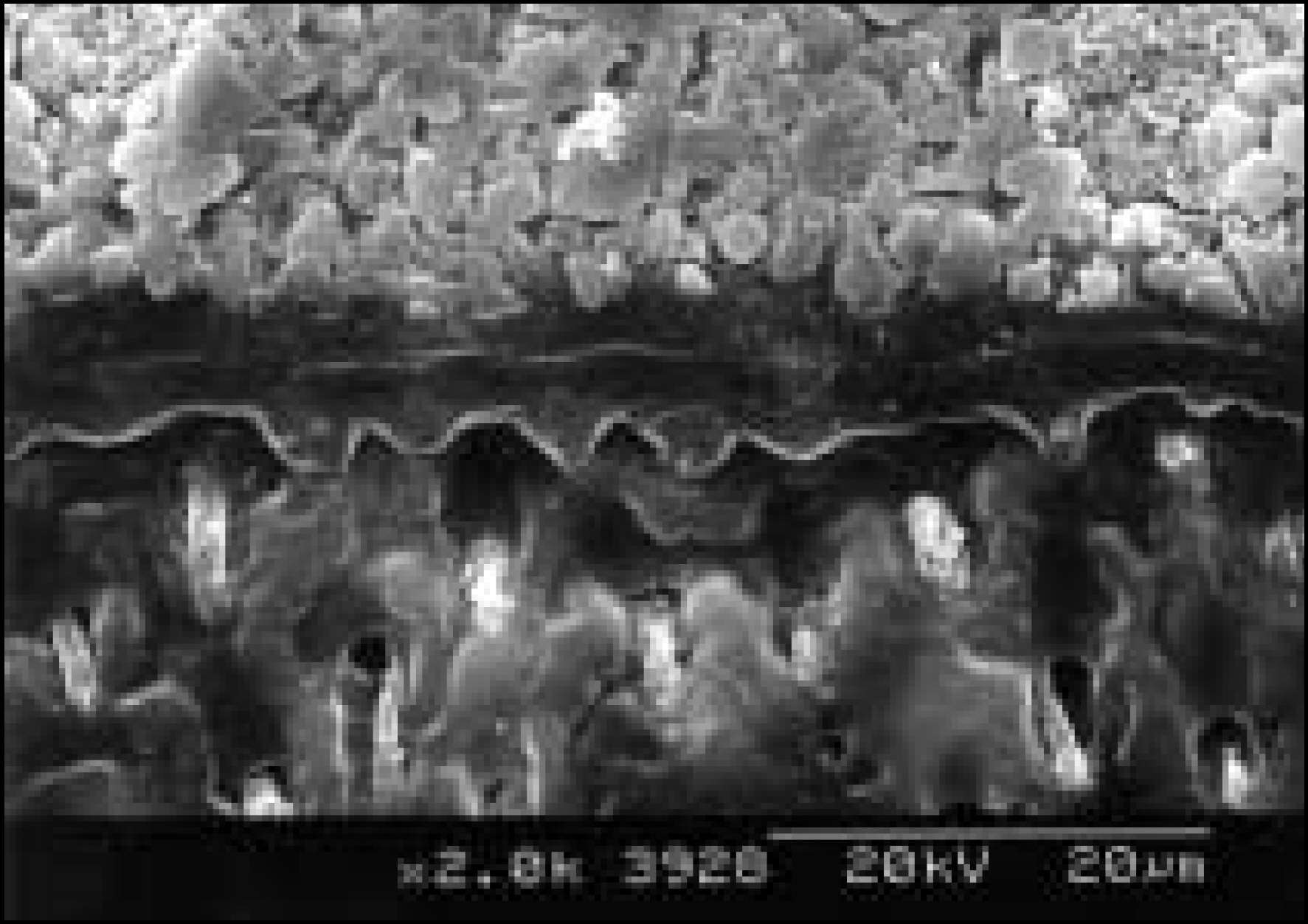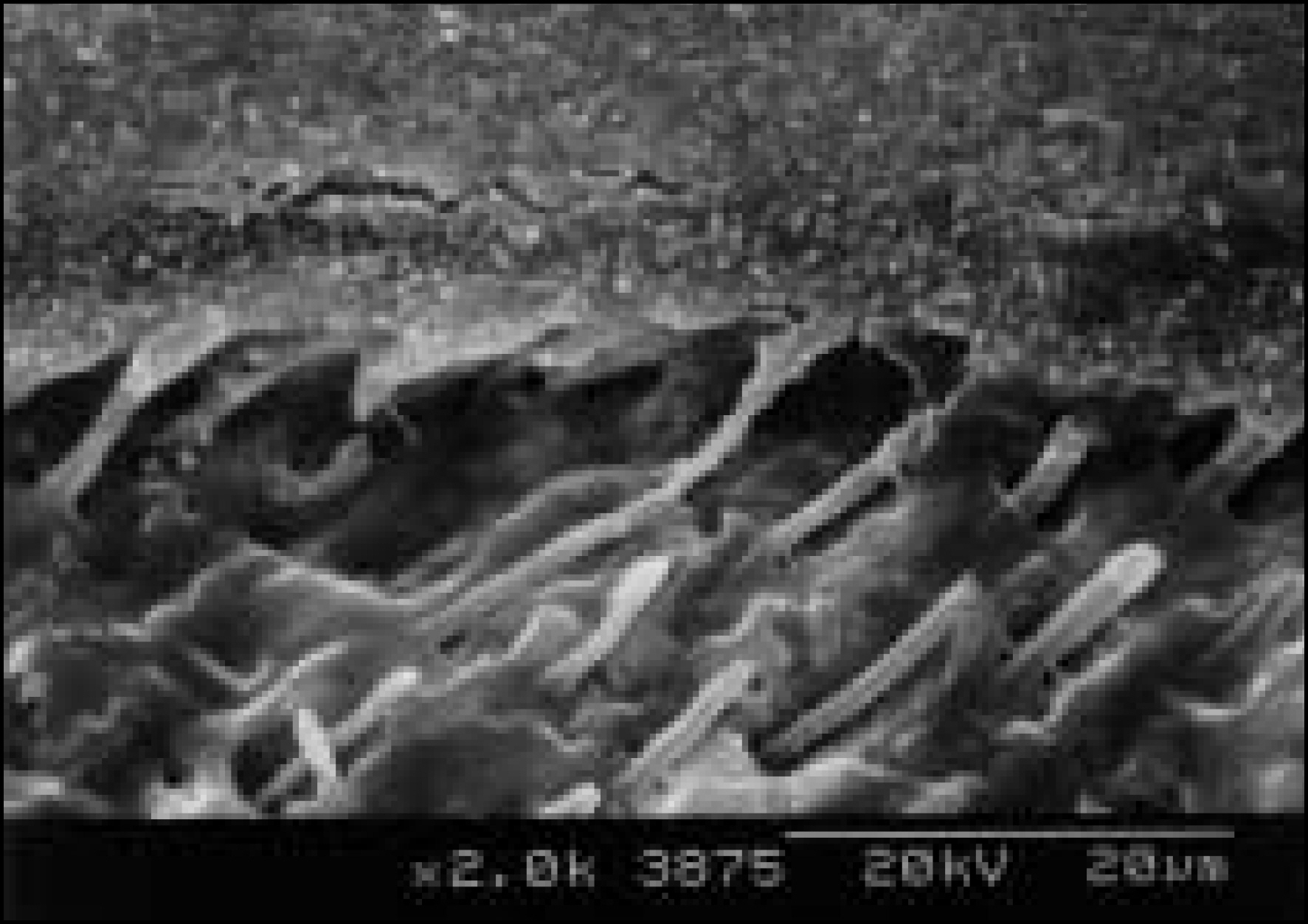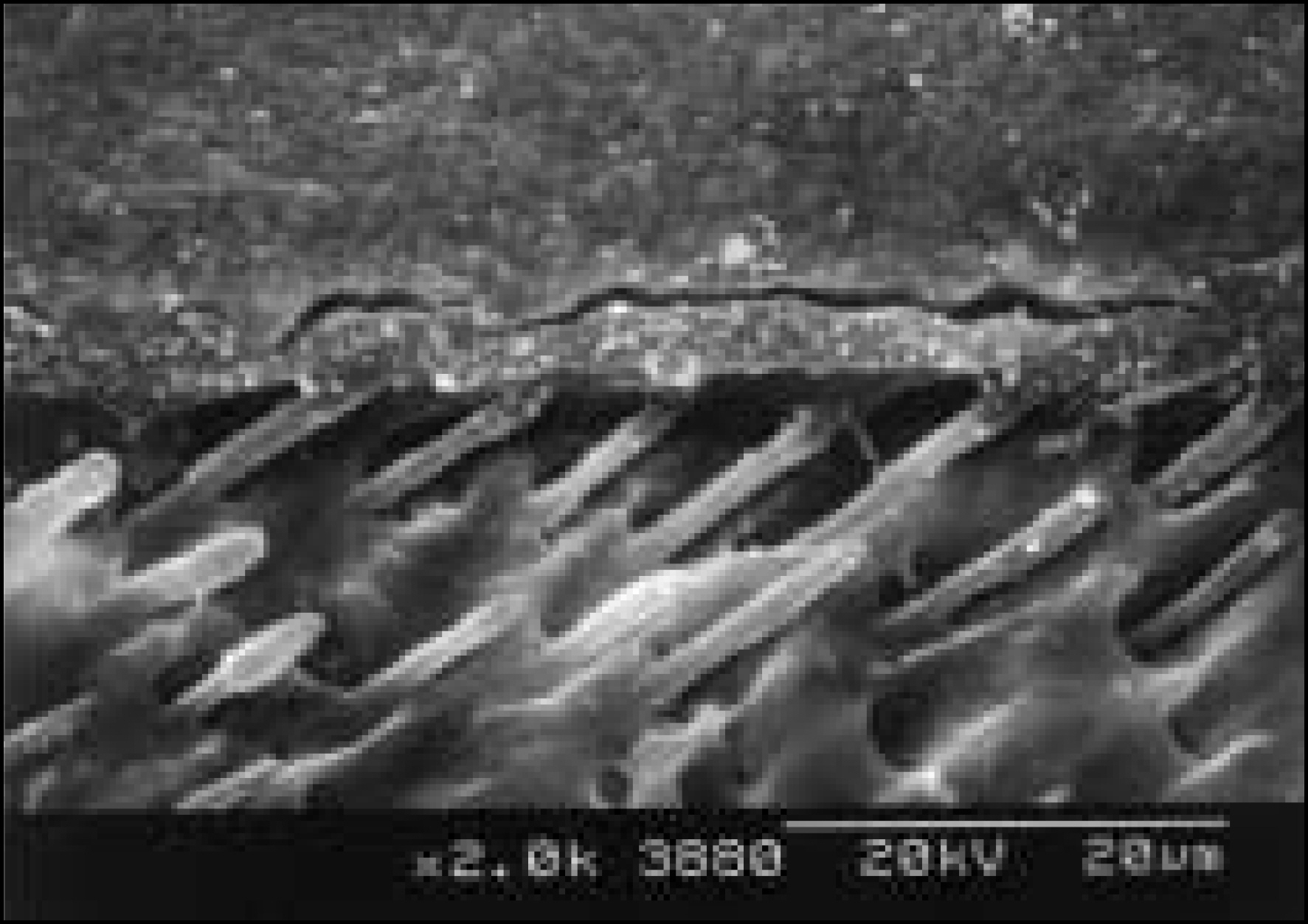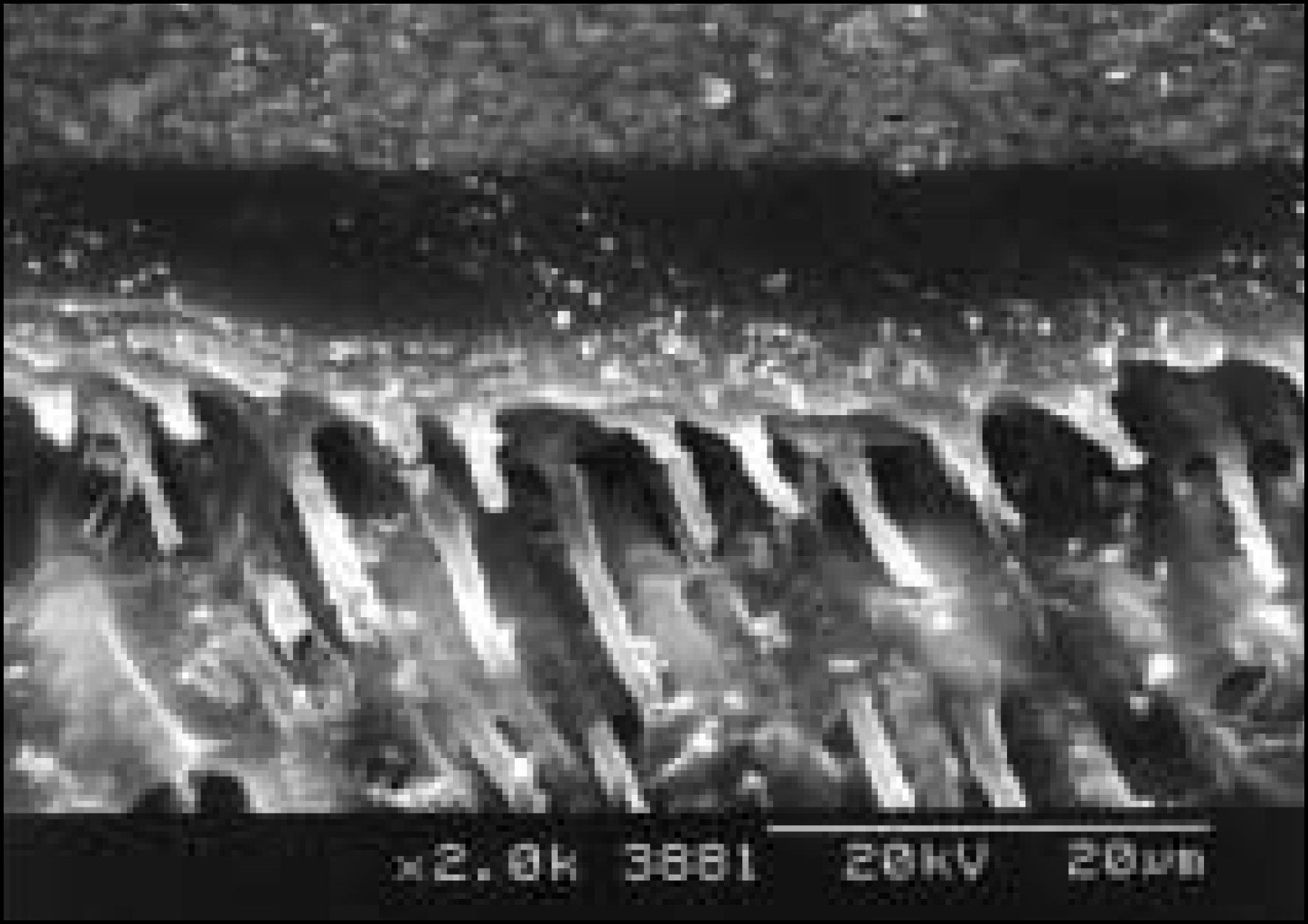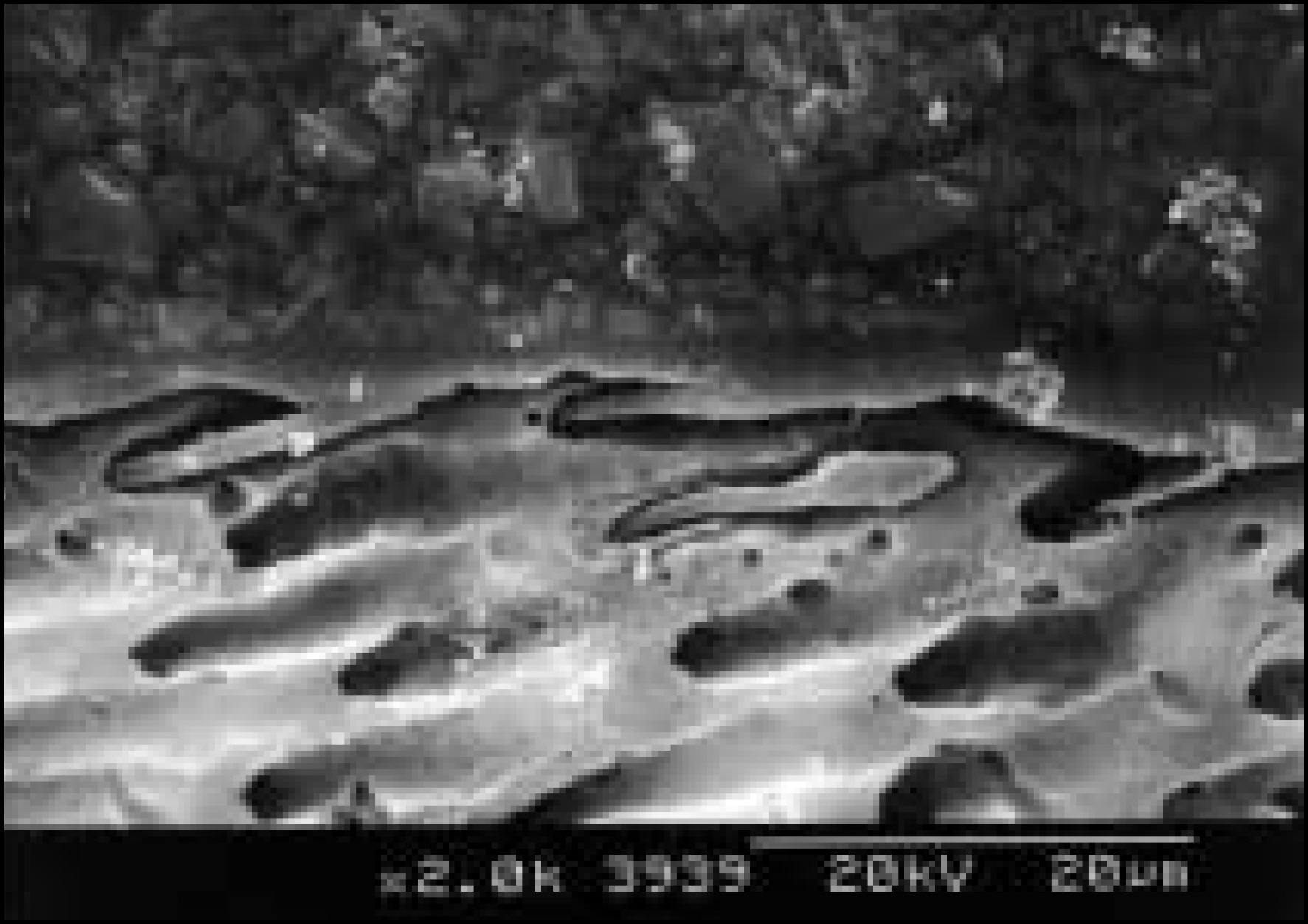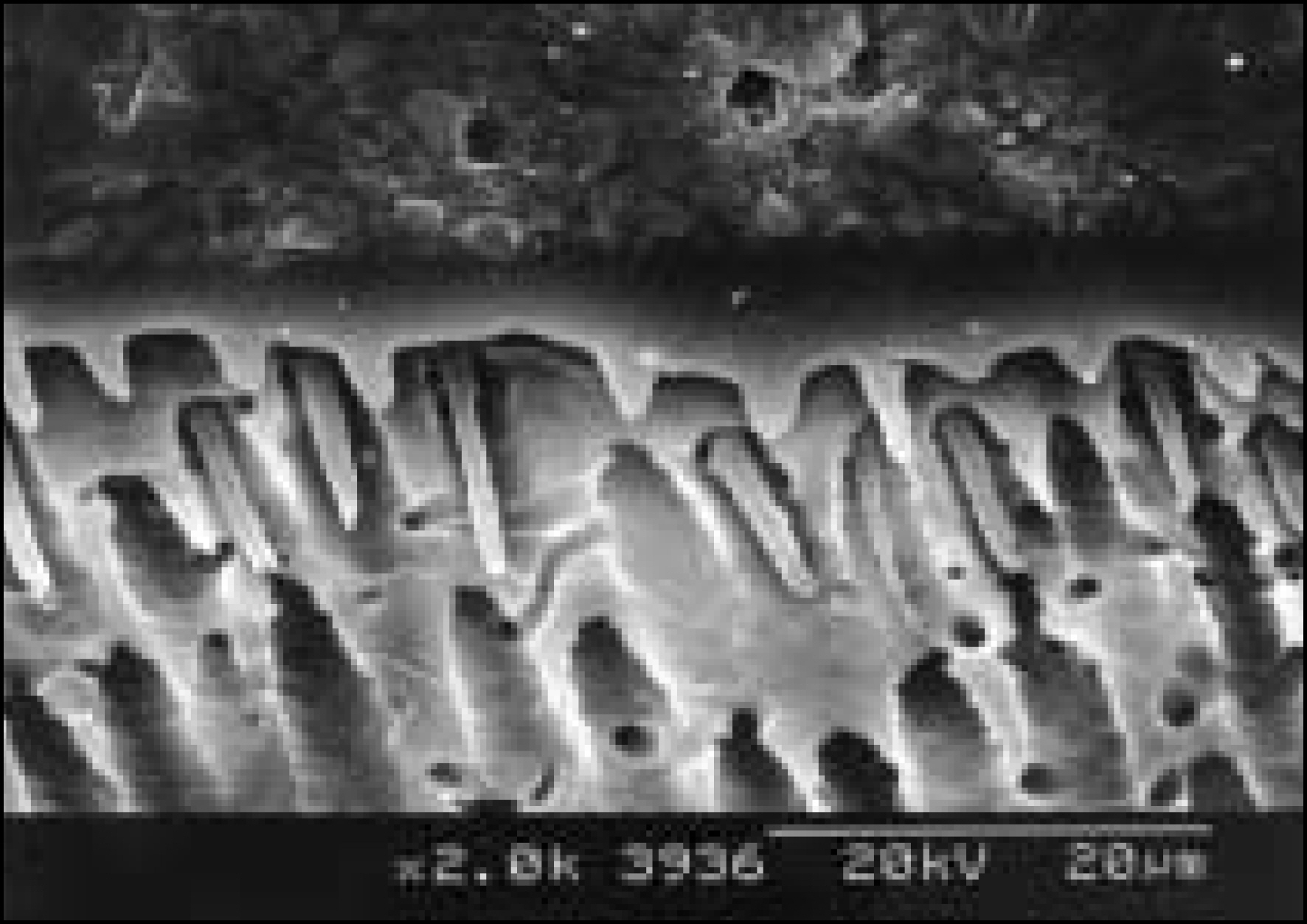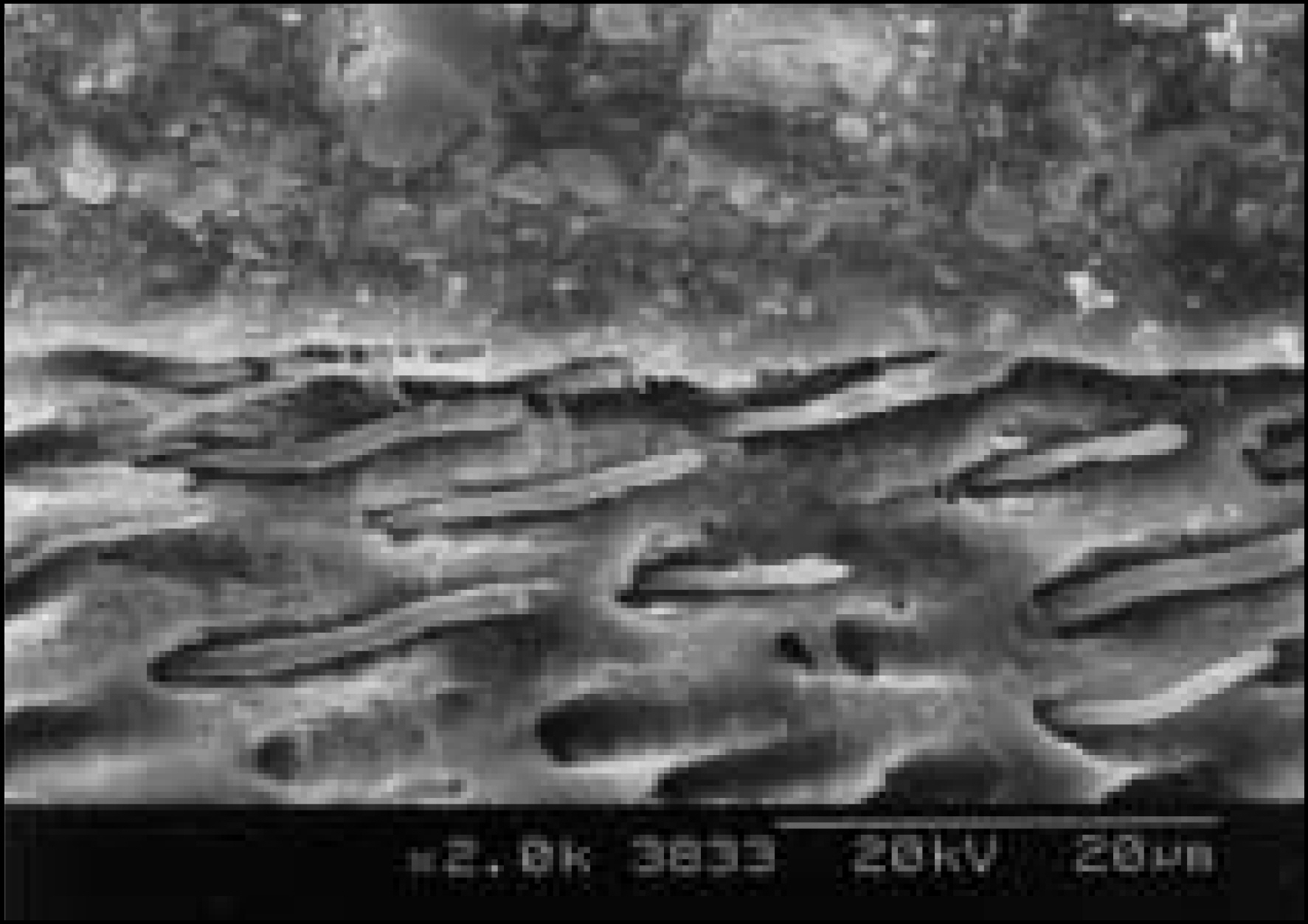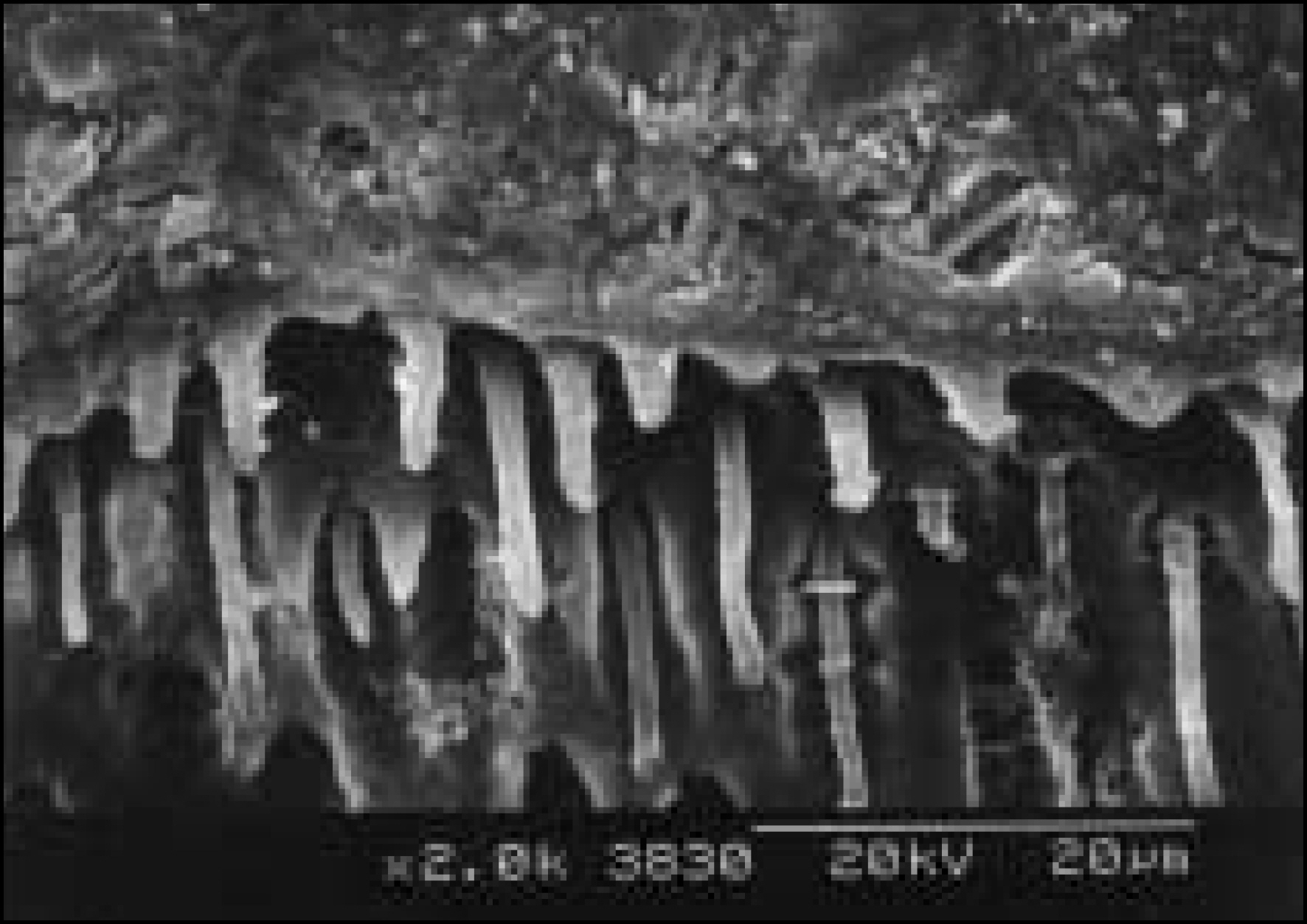J Korean Acad Conserv Dent.
2004 Jan;29(1):1-12. 10.5395/JKACD.2004.29.1.001.
The comparison on micro-tensile bond strengths of variable adhesive systems to Class V cavity
- Affiliations
-
- 1Department of Conservative Dentistry, Division of Dentistry, Graduate School of Kyung Hee University, Korea. psangjin@khu.ac.kr
- KMID: 1987078
- DOI: http://doi.org/10.5395/JKACD.2004.29.1.001
Abstract
- No abstract available.
MeSH Terms
Figure
Reference
-
References
1. Antonucci JM, McKinney JE, Stanabury JW. Resin-modified glass ionomer cement. US patent application. 160856. 1988.2. Attin T, Vataschki M, Hellwig E. Properties of resin-modified glass ionomer restorative materials and two polyacid-modified resin composite materials. Quintessence Int. 27:203–209. 1996.3. Van Dijken JW. 3-year clinical evaluation of a com-pomer, a resin-modified glass ionomer and a resin composite in Class Ⅲ restoration. Am J Dent. 9:195–198. 1996.4. Buonocore MG. A simple method of increasing the adhesion of acrylic filling materials to enamel surface. J Dent Res. 34:849–853. 1955.5. Nakabayashi N. Resin reinforced dentin due to infiltration of monomers into the dentin at the adhesive interface. J Jpn Soc Dent Mater Devic. 1:78–81. 1982.6. Pashley DH, Carvalho RM. Dentine permeability and dentine adhesion. J Dent. 25:355–372. 1997.
Article7. Van Meerbeek B, Perdigão P, Lambrechts P, Vanherle G. The clinical performance of adhesives. J Dent. 26:1–20. 1998.
Article8. Watanabe I, Nakabayashi N. Bonding durability of photocured phenyl-P in TEGDMA to smear layer-retained dentin. Quintessence Int. 24:335–342. 1993.9. Nakabayashi N, Saimi Y. Bonding to intact dentin. J Dent Res. 75:1706–1715. 1996.
Article10. Prati C, Chersoni S, Mongiorgi R, Pashley DH. Resin-infiltrated dentin layer formation of new bonding systems. Oper Dent. 23:185–194. 1998.11. Watanabe I, Nakabayashi N, Pashley DH. Bonding to ground dentin by a phenyl-P self-etching primer. J Dent Res. 73:1212–1220. 1994.12. Yoshiyama M, Sano H, Ebisu S, Tagami J, Ciucchi B, Carvalho RM, Johnson MH, Pashley DH. Regional strengths of bonding agents to cervical sclerotic root dentin. J Dent Res. 75:1404–1413. 1996.
Article13. Yoshiyama M, Carvalho RM, Sano H, Homer JA, Brewer PD, Pashley DH. Regional bond strengths of resins to human root dentine. J Dent. 24:435–442. 1996.
Article14. Sano H, Shono T, Takatsu T, Ciucchi B, Carvalho R, Pashley DH. Relationship between surface area for adhesion and tensile bond strength evaluation of micro-tensile bond test. Dent Mater. 10:236–240. 1994.15. Nakajima M, Sano H, Burrow MF, Tagami J, Yoshiyama M, Ebisu S, Ciucchi B, Russell CM, Pashley DH. Tensile bond strength and SEM evaluation of caries-effected dentin using adhesives. J Dent Res. 74:1679–1688. 1995.16. Pereira PNR, Okuda M, Yoshikawa T, Sano H, Boschian L, Burrow M, Inokoshi S, Yamada T, Tagami T. Effect of water and regional difference on dentin bond strength. J Dent Res. 76:20 Abstract 56. 1997.17. Yoshikawa T, Sano H, Inokoshi S, Yamada T, Tagami J, Ciucchi B, Pashley DH. Effect of C-factor and depth on bonding strength to dentin. J Dent Res. 76:39 Abstract 201. 1997.18. Sano H, Shono T, Sonoda H, Takatsu T, Ciucchi B, Carvalho RM, Pashley DH. Relationship between surface area for adhesion and tensile bond strength - Evaluation of a micro-tensile bond test. Dent Mater. 13:236–240. 1994.
Article19. Gwinnett AJ, Kanca J 3rd. Interfacial morphology of resin composite and shiny erosion lesions. Am J Dent. 5:315–317. 1992.20. Sano H, Shono T, Sonoda H, Takatsu T, Ciucchi B, Carvalho R, Pashley DH. Nanoleakage : leakage within the hybrid layer. Oper Dent. 20:18–25. 1995.21. Wang T, Nakabayashi N. Effect of 2-(methacryloxy) ethyl phenyl hydrogen phosphate on adhesion to dentin. J Dent Res. 70:59–66. 1991.22. Erickson RL, Glasspoole EA. Bonding to tooth structure : A comparison of glass-ionomer and composite resin systems. J Esthet Dent. 6:227–244. 1994.23. Pereira PNR, Yamada T, Tei R, Tagami J. Bond strength and interfacial micromorphology of an improved resin-modified glass ionomer cement. Am J Dent. 10:128–132. 1997.24. Valeria VG, Daniel B, Karl-John S. Enamel and dentin shear bond strength of two resin-modified glass ionomers and two resin baced adhesives. J Dent. 26:497–503. 1998.25. Sidhu SK, Watson TF. Interfacial characteristics of resin-modified glass ionomer cements. J Dent Res. 77:1749–59. 1998.26. Yip HK, Smales RJ. Fluoride release from a polyacid-modified resin composite and 3 resin-modified glasss ionomer materials. Quintessence Int. 31:261–266. 2000.27. Karantakis P, Helvatjoglou-Antoniades M, Theodoridou-Pahini S, Papadogiannis Y. Fluoride release from three glass ionomers, a compomer, and a composite resin in water, artificial saliva, and lactic acid. Oper Dent. 25:20–25. 2000.28. Phrukkanon S, Burrow MF, Tyas MJ. The effect of dentine location and tubular orientation on the bond strength between resin and dentin. J Dent. 27:265–274. 1999.29. Non-Rinse Conditioner(NRC). Dentsply Technical Manual. Konstanz, Germany: 1998.30. Ogata M, Nakajima M, Sano H, Tagami J. Effect of dentin Primer application on regional bond strength to cervical wedge-shaped cavity walls. Oper Dent. 24:81–88. 1994.31. Ogata M, Okuda M, Nakajima M, Pereira PNR, Sano H, Tagami J. Influence of the direction of tubules on bond strength to dentin. Oper Dent. 26:27–35. 2001.32. Perdigão J, May Jr KN, Wilder Jr AD, Lopes M. The effect of depth of dentin demineralization on bond strengths and morphology of the hybrid laayer. Oper Dent. 25:186–194. 2000.33. Tanumiharja M, Burrow MF, Tyas MJ. Microtensile bond strengths of seven dentin adhesive systems. Dent Mater. 16:180–187. 2000.
Article34. Uno S, Finger WJ. Function of the hybrid zone as a stress-absorbing layer in resin-bonding. Quintessence Int. 26:733–738. 1995.35. Uno S, Finger WJ. Effect of acidic conditioners on dentin demineralization and dimension of hybrid layers. J Dent. 26:211–216. 1996.36. Sano H, Ciucchi B, Matthews WG, Pashley DH. Tensile properties of mineralized and demineralized human and bovine dentin. J Dent Res. 73:1205–1211. 1994.
Article37. Van Meerbeek B, Willems G, Celis JP, Roos JR, Braem M, Lambrechts P. Assessment by nano-indentation of the hardness and elasticity of the resin-dentin bonding area. J Dent Res. 72:1434–1442. 1993.
Article38. Pashley DH, Sano H, Ciucchi B, Yoshiyama M, Carvalho RM. Adhesion testing of dentin bonding agents: a review. Dent Mater. 11:117–125. 1995.
Article
- Full Text Links
- Actions
-
Cited
- CITED
-
- Close
- Share
- Similar articles
-
- The effect of adhesive thickness on microtensile bond strength to the cavity wall
- Comparison of shear, tensile and shear/tensile combined bonding strengths in bracket base configurations
- Comparison of bracket bond strength in various directions of force
- The effect of multiple application on microtensile bond strength of all-in-one dentin adhesive systems
- The effect of hybrid layer thickness on microtensile bond strength of three-step and self-etching dentin adhesive systems

